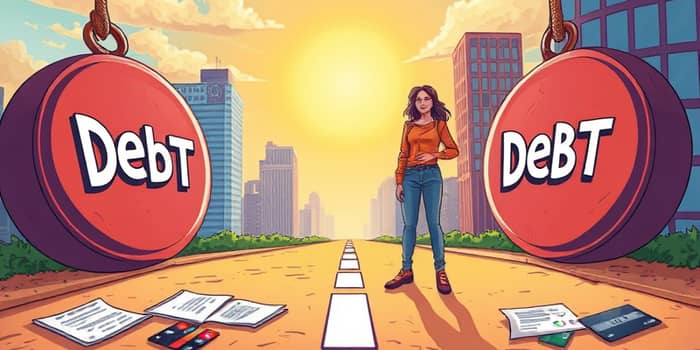
Taking on fresh financial obligations before you’ve tamed existing balances can lead to a vicious cycle. This comprehensive guide will inspire you and equip you with practical tools to regain control and build a stronger financial future.
When you carry multiple debts, each additional loan or credit line compounds your burden. Your payments multiply, interest accrues faster, and your ability to save for long-term goals weakens.
Research shows that high interest rates drain resources and can trap you in a cycle of minimum payments that never reduce the principal. It’s not only a numbers game: debt influences how you plan for retirement, buy a home, or finance education.
As of Q3 2024, total U.S. consumer debt reached an astonishing $17.57 trillion. Average household credit card debt stands at $7,236—a 38% jump since 2021—while interest rates have climbed to 24.26%.
Different generations carry varying loads:
Even more revealing, 42% of Americans named debt reduction their top financial priority for 2025, and over half worry it will jeopardize their long-term wellbeing.
Debt doesn’t just affect your bank balance. The stress of juggling payments, wondering if you’ve spent too much, and fearing calls from creditors can weigh heavily on your mental health.
Studies indicate that chronic financial strain leads to anxiety, sleep disturbances, and strained relationships. Avoiding new debt until you have a plan eases this burden and fosters long-term financial stability.
To regain control, you need a roadmap. Start by creating a detailed budget that lists income, fixed expenses, and variable costs. Identify areas to trim—subscriptions, dining out, or impulse purchases—and redirect those savings toward debt repayment.
For those overwhelmed, Debt Management Plans (DMPs) can offer relief. In 2024, DMP participants saw their minimum payments drop from $915 to $695 on average, and interest rates fell to 6.8% compared to credit card APRs of 23%.
Your credit utilization ratio—the amount of revolving debt relative to your limits—makes up 30% of your credit score. By keeping balances low and avoiding new credit lines, you can quickly improve your rating.
Timely payments, low utilization, and a demonstrated ability to manage existing debts are critical components of a comprehensive debt management plan that lenders respect.
Adding new balances when you’re already stretched thin increases your risk of missed payments, late fees, and penalty APRs. Even one missed payment can lower your score and trigger higher rates on all accounts.
There are circumstances where taking on new debt makes sense:
Before borrowing, ensure your debt-to-income ratio is well below 36% and that you can absorb new payments without derailing your budget.
Consult a certified financial planner to tailor strategies to your situation. Watch out for predatory debt relief firms—always verify legitimacy and understand fees before enrolling.
Regularly track your progress, celebrate milestones—no matter how small—and adjust your plan as life changes. Overcoming debt is a journey that demands persistence, patience, and informed decisions.
Avoiding new debt until your existing balances are manageable is not a restriction, but a strategic choice for empowerment. By focusing on repayment, negotiating terms, and employing proven methods like snowball or avalanche, you can break free from the cycle of interest and fees.
Use debt only as a tool—with clear rules, realistic budgets, and emergency reserves. When your obligations are under control, you’ll be ready to leverage credit wisely, invest in your future, and enjoy greater financial freedom and peace of mind.
References













